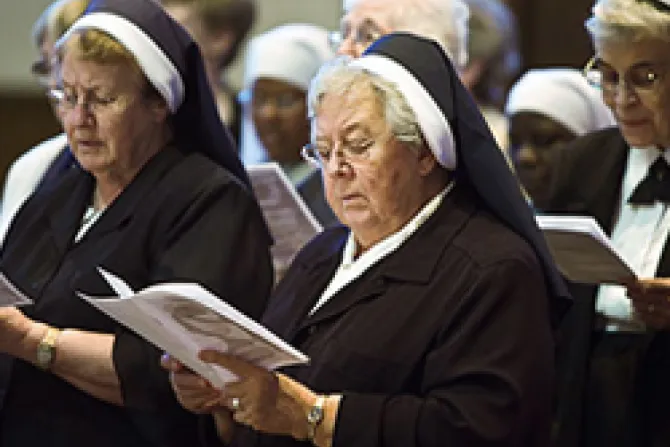Chicago, Ill., Aug 11, 2009 / 19:43 pm
A new survey of those in U.S. religious communities finds that most vowed religious are aging. However, most postulants in training are under 30 and tend to favor larger communities that are faithful to the Church’s teachings.
The Georgetown University-based Center for the Applied Research in the Apostolate (CARA) conducted the survey on behalf of the National Religious Vocations Conference (NRVC), a Chicago-based professional association of religious vocation directors.
The survey polled both religious institutions and individuals who were in training for their vows or had made final vows, determining that at least 2,630 responding men and women were in initial formation and nearly 4,000 were in initial formation or had professed final vows in the previous 15 years.
Of those in training, about 43 percent of the respondents were under 30. About 21 percent of these were Hispanic, while 14 percent were Asian or Pacific Islander and six percent African or African American.
Previously, those who had finally professed made up an estimated 94 percent white, a press release from the NRVC says.
Among all new members 70 percent entered with a bachelor’s degree, while 90 percent held fulltime jobs. Seven percent have been married and five percent have children. A reported 73 percent attended Catholic schools for at least part of their education, while 68 percent considered religious life before age 21.
The NRVC reports that religious are an aging population overall, with most communities reporting diminishing numbers. According to the institutional survey results, about 75 percent of finally professed men and 91 percent of finally professed women are aged 60 and over, while a majority of those under the age of 60 are in their 50s.
However, some religious orders are attracting new members and a few are experiencing “significant growth.” “Men’s communities and women’s communities following more traditional practices have better success attracting younger members today,” the NRVC says.
Looking at the big picture, the report finds that a majority of religious communities have at least one person in formation but only about 20 percent had more than five people in initial formation. Further, some responding institutes had recently merged, increasing the proportion of those institutes with postulants.
The survey reports that most new religious members want to live, work and pray with other members of their community. New entrants prefer to live in large communities of eight or more, while institutes in which members live alone face challenges attracting new members.
Older entrants to a community are drawn to its mission, while younger entrants look for an institute’s fidelity to the Church. Younger members also seek to wear a religious habit.
Younger members report not having known men and women religious when they first felt drawn to that life. They reported relying on a friend or mentor for recommendations and also used online vocation resources, including websites for religious communities.


